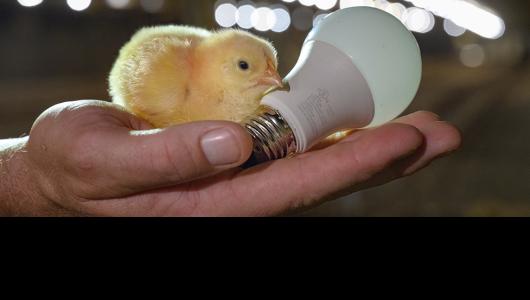Landowners across Appalachia are voluntarily managing their forests to help at-risk songbirds, such as the golden-winged warbler and cerulean warbler. With the help of USDA’s Natural Resources Conservation Service and other conservation partners, landowners can make improvements to their forests while also creating habitat for these birds.
“The warblers are really the poster child for everything else,” said Shannon Farrell, a partner forester from Indiana University of Pennsylvania Research Institute working with USDA on the warbler program. “What we’re really doing is working with landowners to sustainably manage their forest to benefit wildlife and forest health.”
The warblers are currently listed as “at-risk” species. Creating and maintaining forested areas comprised of diverse forest ages, provides a complete spectrum of forest habitat conditions that cerulean and golden-winged warblers require during breeding season.
The golden-winged warbler nests on the ground in young forest habitat comprised of a mixture of grasses, goldenrod, shrubs, saplings and scattered large trees.
The golden wing warbler spend part of the year in the Appalachian Mountains of North America as well as the Andes Mountains of South America. Photo by Greg Lavaty.
The cerulean warbler nests high atop the canopy in mature forests that have complex canopy structure. Increasing the availability of young forest and structurally complex mature forests across a landscape can have multiple benefits for the area, not just for the target species.
Cerulean warblers spend part of the year in the Appalachian Mountains of North America as well as the Andes Mountains of South America. Photo by DJ McNeil.
Sustainable Forestry Practices
The process of creating habitat for warblers includes identifying optimal trees to retain, controlling invasive species, logging undesirable trees and stabilizing disturbed areas once harvest is complete.
When clearing select trees, the goal is to mimic the disturbance that a natural tree fall would have on the forest floor.
It will help to open the canopy, allowing sunlight to hit the forest floor and helping plant species grow and create good cover.
The ideal trees to save include mixed oak species, hickory, maple, yellow poplar, black cherry and black locust. For the golden-winged warbler, the optimal basal area is 10-30 square feet per acre, while the cerulean warbler is 40-90 square feet per acre.
Through the Environmental Quality Incentives Program, the Natural Resources Conservation Service provides financial assistance for those who are enrolled in the program along with facilitating with the property management.
Download our “Conservation Choices for Wildlife – Golden-winged Warbler” booklet to learn more about recommended practices.
You Can Help
Tom Bolt, an Allegany County, Maryland landowner who has worked with USDA since 2013, said he uses the money he gets to help the property further. “We put the money we receive back into the land,” Bolt said.
In Maryland alone, USDA has help landowners establish 871 acres of young forest for the golden-winged warbler and 312 acres of structurally-diverse, mature forest habitat for the cerulean warbler.
To learn more about managing for healthy, diverse forests, visit our multimedia story.


